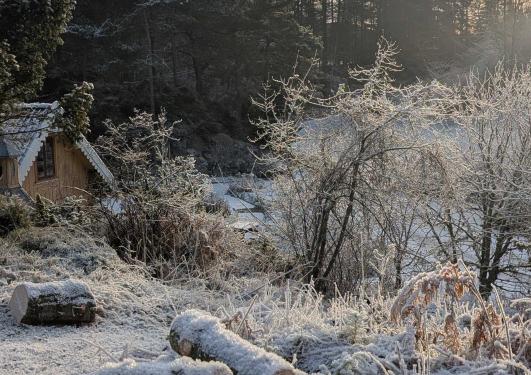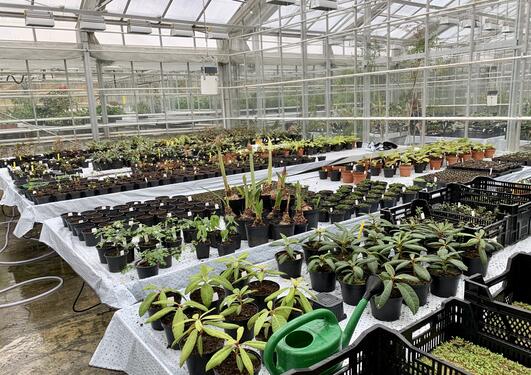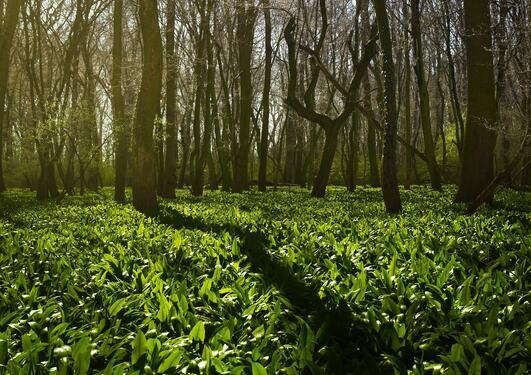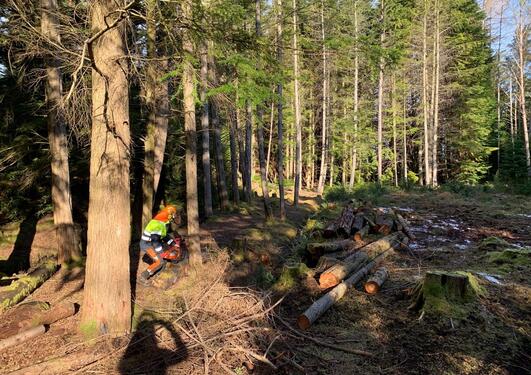Å gjøre hagene 'grønne'
I dette andre blogginnlegget fra Scott Bremers feltarbeid i Universitetshagene skriver han om hvordan skiftende årstider påvirker arbeidet i Arboretet.

Hovedinnhold
Jeg er interessert i hvordan skiftende årstider påvirker arbeidet i Arboretet og om det er noen endringer i hvordan faggrupper som jobber der relaterer seg til årstidene.
En måte å se på dette er å studere hvilke verktøy og hjelpemidler de bruker i de ulike periodene av året. På den korte tiden jeg har vært her kan jeg se at teknologiske og institusjonelle endringer, som for eksempel å gå over til elektriske drevne verktøy, endrer de ansattes verktøyboks. Over tid kan dette endre hvordan de arbeider gjennom de ulike årstidene.
(resten av blogginnlegget følger på engelsk under)
As I started studying seasonal cultures more generally, I increasingly saw people encapsulate whole seasons in a single object; winter lives in their game console, spring is a favorite coat. And in Arboretet too, seasonal periods are marked by the things people use. An obvious example is in the clothes we wear. When I started work in January, I was layered in wool, and a colleague shook his head at my thin rubber gloves. But last Friday I was in a t-shirt and sweating in those same rubber gloves as I dug a rose bed.
Seasons do live in things at Arboretet, and in people’s care for those things
The tools of the trade also tell the season for the gardener. The dark months were a time of pruning and wood-chipping, and so I associate the whine of the chainsaw and the hungry sounds of the chipper with that wintery work. Likewise, as I started working in the greenhouse in March, and helping post seeds to international botanical gardens, then the small sachets of seeds seem to symbolise spring. And when we removed the branches that insulated the fragile plants against the frost, then the cold weather seemed well and truly behind us. And it’s not only the objects themselves, but also how the gardeners maintain them that mark the periods of the year. When the park benches need repairing and re-painting, or when the machines need servicing for example.
Changing the toolbox
But a combination of ‘climate-friendly’ technologies and policies may be changing the gardeners’ seasonal toolbox. The University is aspiring to be carbon neutral, and this means replacing all those GHG-emitting tools with electric versions. Though I have to say, I’ll miss the smell of chainsaws. Tractors too will need replacing, and one gardener took me through the finer points of hydrogen-powered tractors. And peat, a valuable resource in the greenhouse is also a valuable carbon sink if left in the ground, and the search is on for useful alternatives. Changing the toolbox changes how people relate to the seasons, and can introduce complications.
For example, the first generation of electric chainsaws didn’t work very well at low temperatures – like my old iPhones battery – which would make the winter pruning work difficult (one day we worked at -14 degrees Celsius). The new ‘green’ toolbox is also cared for differently. While the traditional toolbox was maintained by the gardeners themselves, some of the new technologies can only be serviced by specialists. Interestingly, climate change may be indirectly changing our seasons in ways that we didn’t anticipate. Our responses to climate change may be changing the objects we use to represent seasons.
This is the second blog post from Dr. Scott Bremer. Read all blog posts from the CALENDARS project here.





